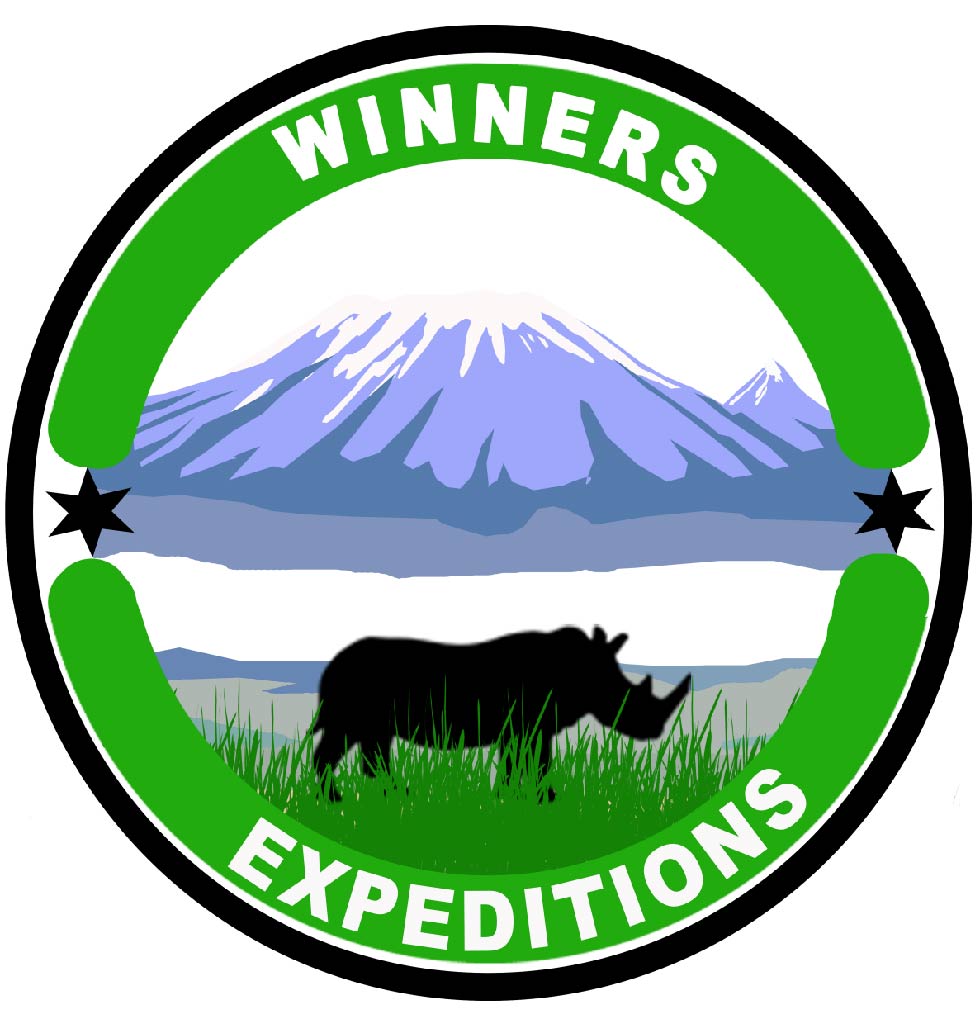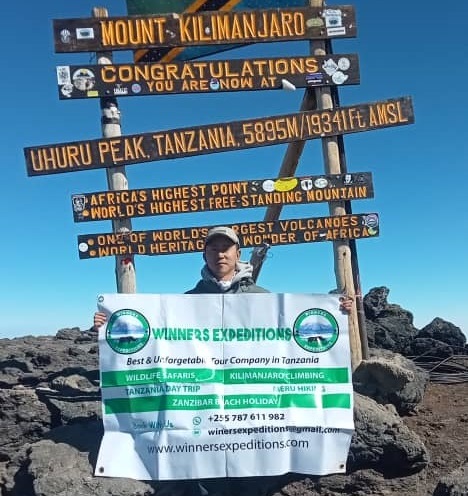
Climbing Mount Kilimanjaro, the highest free-standing mountain in the world and the highest peak in Africa, is a thrilling and challenging adventure. The best time to climb Kilimanjaro largely depends on weather conditions, trekking conditions, and personal preferences. It's important to note that while I will provide information, it's always best to consult us at +255 787 611 982 WhatsApp or email us via winnersexpeditions@gmail.com for the most up-to-date and personalized advice.
1. Dry Season
The best time to climb Kilimanjaro is during the dry season, which generally falls into two main periods:
January to mid-March
This is considered the primary dry season, characterized by clear skies and little rainfall. The weather is generally warm during the day and colder at night, especially at higher altitudes. This period is often the busiest in terms of tourist activity.
June to October
This period is also part of the dry season and is another popular time to climb Kilimanjaro. Similar to the January to mid-March period, the weather is usually clear, making for excellent trekking conditions.
2. Wet Season
The wet season occurs in two main periods:
Late March to May
This period experiences heavy rainfall and is generally considered the long rainy season. Climbing during this time can be more challenging due to the slippery and muddy trails, as well as reduced visibility.
November to early December
This is the short rainy season, with some rainfall but typically not as heavy or consistent as the long rainy season.
3. Factors to Consider
Weather
Climbing during the dry season increases the likelihood of clear skies, offering stunning views and a more pleasant experience overall. However, it's essential to be prepared for changing weather conditions, as temperatures can vary significantly between daytime and nighttime.
Crowds
The dry season is the most popular time to climb Kilimanjaro, so you can expect more climbers on the trails and at the camps. If you prefer a quieter and less crowded experience, consider climbing during the wet season.
Difficulty
Climbing Kilimanjaro is a challenging endeavor, regardless of the time of year. However, trekking during the wet season may add extra difficulties due to the slippery and muddy terrain.
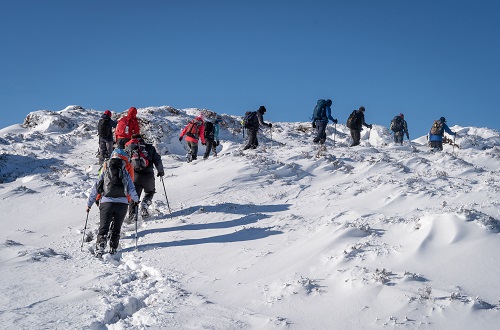
Month-by-month highlights during climbing Kilimanjaro
Each month offers different highlights and challenges. Below is a month-by-month breakdown of the best times to climb Kilimanjaro:
1. January
Highlights
January is within the short dry season, offering relatively clear skies and excellent visibility, providing breathtaking views during the ascent.
Considerations
As this is one of the peak months, there might be more climbers on the trails and at the camps.
2. February
Highlights
Similar to January, February falls within the short dry season, providing favorable weather conditions and high chances of reaching the summit.
Considerations
Due to the pleasant weather, February remains a busy month on Kilimanjaro, and early booking is recommended.
3. March
Highlights
The short dry season continues, making March another viable month for climbing Kilimanjaro. The mountain's routes are less crowded compared to January and February.
Considerations
While it is still relatively dry, the likelihood of afternoon showers increases as the month progresses.
4. April
Highlights
April marks the beginning of the long rainy season. The landscape is lush and green, and there are fewer climbers on the trails.
Considerations
Climbing Kilimanjaro in April requires thorough preparation for wet and muddy conditions, and summit success rates might be slightly lower.
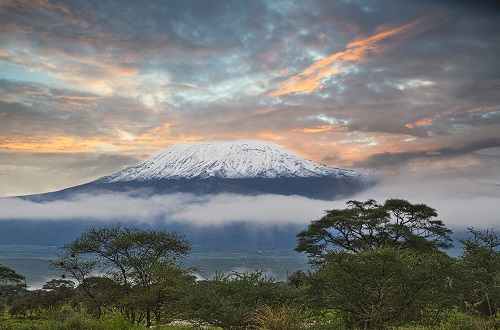
5. May
Highlights
The long rainy season continues, and while it might be wet, the mountain's beauty is at its peak with blooming flora and fewer tourists.
Considerations
The trails can be slippery, and the visibility might be reduced. Be prepared for challenging trekking conditions.
6. June
Highlights
June is the start of the short dry season, with less rainfall and improving weather. The mountain becomes more accessible, and wildlife sightings are more common.
Considerations
The number of climbers begins to increase as the weather improves.
7. July
Highlights
July falls within the short dry season, providing excellent trekking conditions and high chances of summit success. The weather is generally mild and stable.
Considerations
July is one of the busiest months, so book early to secure permits and accommodations.
8. August
Highlights
Similar to July, August offers favorable weather and clear skies, making it a popular month for climbing Kilimanjaro.
Considerations
Crowds can be significant during August, so consider alternative routes if you prefer a quieter experience.
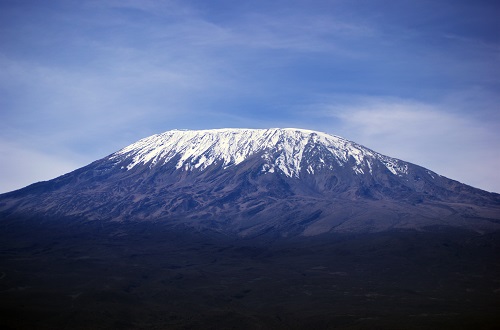
9. September
Highlights
The short dry season continues in September, offering fantastic trekking conditions and stunning views.
Considerations
Like August, September can be crowded. However, the weather remains favorable for summit attempts.
10. October
Highlights
October is the end of the short dry season, with decreasing crowds and still relatively good weather conditions.
Considerations
The likelihood of afternoon showers starts to increase as October progresses.
11. November
Highlights
November marks the start of the long rainy season, with the mountain becoming quieter as fewer climbers venture during this time.
Considerations
Climbing Kilimanjaro in November requires preparation for wet and muddy trails, and summit success rates may be lower.
12. December
Highlights
December is within the long rainy season, resulting in a quieter mountain with fewer climbers.
Considerations
Be prepared for wet and challenging conditions, especially during the latter part of the month.
We are available 24/7
Let us plan your tour trip on Mount Kilimanjaro
